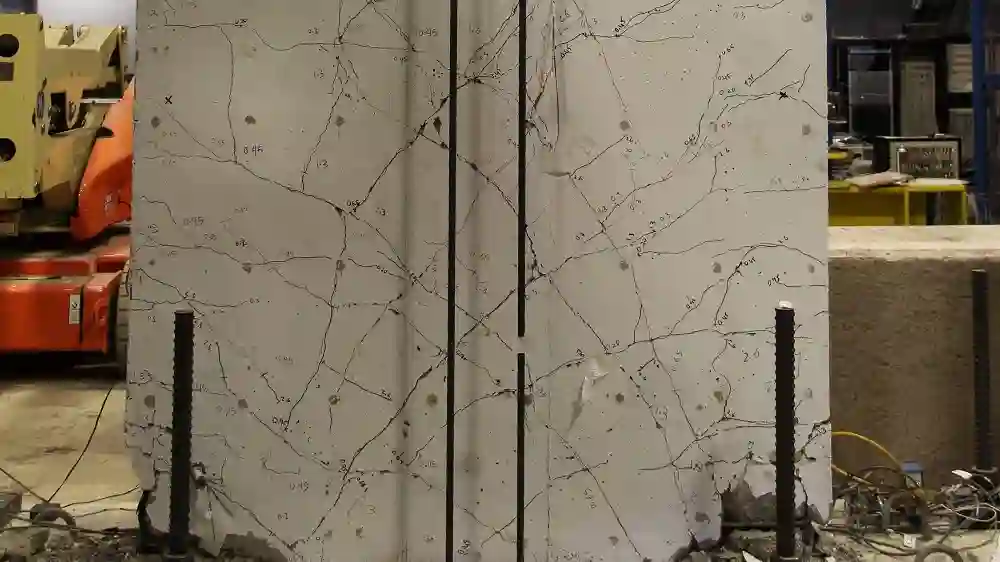Understanding Concrete Cracks in Building Slabs
Concrete slabs, fundamental components in building construction, are susceptible to cracking due to various factors:
- Thermal Expansion and Contraction: Temperature fluctuations cause concrete to expand and contract, leading to stress and potential cracking.
- Shrinkage: As concrete cures, it undergoes shrinkage, which can result in tensile stresses and subsequent cracking.
- Structural Loads: Excessive loads or improper load distribution can induce cracks in slabs.
- Subgrade Settlement: Uneven or unstable subgrades can cause differential settlement, leading to slab cracking.
Identifying the cause and nature of cracks is crucial for selecting the appropriate repair method.
Concrete Crack Injection Methods
Several injection techniques are utilised to repair cracks in concrete slabs:
Epoxy Injection
Epoxy injection is a widely adopted method for repairing non-moving cracks in concrete slabs, restoring structural integrity and preventing further deterioration. The process involves injecting a low-viscosity epoxy resin into the crack, bonding the fractured sections together.
Applications:
- Repairing cracks in foundations, walls, slabs, columns, and piers.
- Restoring the structural strength of cracked concrete elements.
Advantages:
- High bond strength, effectively restoring the original structural integrity.
- Durable and resistant to chemicals and moisture.
Considerations:
- Not suitable for active or moving cracks.
- Requires a clean and dry crack surface for optimal adhesion.
- Professional expertise is necessary to ensure proper application.
Polyurethane (PU) Injection
Polyurethane injection is commonly used for sealing cracks that are subject to moisture or where flexibility is required. The hydrophilic nature of certain polyurethane resins allows them to react with water, expanding and forming a flexible seal.
Applications:
- Sealing leaking cracks in below-grade structures, such as basements and tunnels.
- Repairing cracks in slabs exposed to moisture or wet conditions.
Advantages:
- Effective in wet or actively leaking cracks.
- Flexible, accommodating slight movements in the structure.
Considerations:
- Lower tensile strength compared to epoxy; not suitable for structural repairs.
- Proper selection of resin type is crucial based on the specific application and environmental conditions.
Cementitious Grouting
This method involves injecting a cement-based grout into larger cracks or voids within concrete slabs. It’s typically used for non-structural repairs where restoring the appearance or preventing water ingress is the primary concern.
Applications:
- Filling wide cracks or voids in slabs and foundations.
- Preemptive sealing to prevent moisture penetration.
Advantages:
- Compatible with the existing concrete matrix.
- Cost-effective for large-scale applications.
Considerations:
- Limited structural strength; not suitable for structural repairs.
- Potential for shrinkage over time, which may necessitate additional treatments.
Acrylic Gel Injection
Acrylic gels are used for sealing fine cracks and joints, particularly in situations requiring a waterproof barrier. The low viscosity of acrylic gels allows them to penetrate fine cracks effectively.
Applications:
- Waterproofing below-grade structures.
- Sealing fine cracks in slabs and walls.
Advantages:
- Excellent penetration into fine cracks.
- Flexible and resilient, accommodating structural movements.
Considerations:
- Primarily used for waterproofing; not suitable for structural repairs.
- Requires specialised equipment and expertise for application.
Case Studies: Concrete Crack Injection in Sydney
Sydney’s construction landscape offers several examples of concrete crack injection applications:
Quakers Hill Wastewater Treatment Plant
At the Quakers Hill wastewater treatment plant, a concrete pump pit approximately 7 meters deep with 40 cm thick walls and floor had settled, leading to structural concerns. To address this, polyurethane foam was injected to fill voids and lift the settled pump pit, restoring its structural integrity.
Residential and Commercial Buildings
In Sydney, companies like Portolesi Structural specialise in concrete crack injection repairs for commercial and strata management. They utilise various crack injection techniques to address structural issues and prevent further deterioration in both residential and commercial properties.
Infrastructure Assessments by Infracorr
Infracorr employs a range of techniques in assessing and monitoring cracked concrete, including visual inspections and non-destructive testing. These assessments inform the selection of appropriate repair methods, such as crack injection, to ensure the safety and longevity of structures.
Considerations for Selecting Crack Injection Methods
When choosing an appropriate crack injection method, various factors must be considered:
- Crack Size and Type: Fine cracks may require acrylic gels, whereas larger structural cracks benefit from epoxy injection.
- Moisture Exposure: If the crack is in a wet environment, polyurethane injection may be the best solution.
- Structural Integrity Requirements: Epoxy injection is preferred for load-bearing cracks, while cementitious grouting is suitable for non-structural repairs.
- Environmental Conditions: Temperature, humidity, and exposure to chemicals can influence the choice of injection material.
Conclusion
Concrete crack injection is a vital process in maintaining the structural integrity and longevity of buildings, particularly in a dynamic and growing city like Sydney. With a range of techniques available—epoxy, polyurethane, cementitious grouting, and acrylic gel injection—each method serves specific applications and conditions.
Sydney’s construction industry continues to evolve, integrating advanced crack injection techniques to ensure safety and durability in residential, commercial, and infrastructural projects. Property owners, engineers, and contractors must carefully evaluate the type of crack and the surrounding environmental conditions to choose the most suitable injection method. By employing expert assessments and industry best practices, effective crack repair solutions can be implemented, safeguarding Sydney’s built environment for the future.













